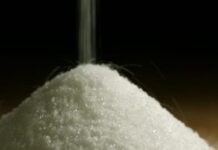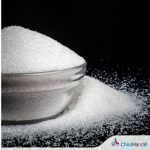Sugar mills, currently producing little or no bio-ethanol from B-class molasses, plan to ramp up production. They may constitute 10 per cent of total ethanol produced in the sugar season 2018-19, according to industry sources and analysts.
“Tenders for ethanol supplies for 2018-19 have been invited with the new rates. The bids have been submitted by distilleries and we will know in a few days how much of B heavy molasses will be committed for ethanol,” said Abinash Verma, Director General, Indian Sugar Mills Association (ISMA).Most mills in the country, barring a few in Maharashtra, produce ethanol from C heavy molasses only.
To promote bio-ethanol production available for fuel-blending programme, the Government recently announced incentives for sugar mills producing ethanol from the intermediary B heavy molasses and cane juice.
Besides, the diversion of B heavy molasses and cane juice into ethanol production would have helped to maintain sugar production at manageable levels during years when sugarcane yields were high. While one litre of ethanol produced from B heavy molasses or partial sugarcane juice will command a premium ex-mill price of ₹52.43/litre (as against the prevailing ₹47.13), that from cane juice will fetch ₹59.13.
Government incentives
“The recent government announcement on ethanol incentives were made close to the crushing season, giving less time for the upgradation. Still, we expect nearly 5-10 per cent of total ethanol production to be from B heavy molasses by the end of the current season,” said Hetal Gandhi, Director of Crisil Research.
However, she said the mills will complete their capacity additions by the next sugar season and as result, a significant amount of molasses is expected to be produced from B molasses from the next season onwards
Verma said the Government is encouraging capacity addition, including setting up new distillation capacities. “Sugar companies are excited about building up capacities for more ethanol production as subsidised loans at around 6 per cent interest rate are available as well as premium rates are paid for ethanol made from B heavy molasses and cane juice,” he said. “For the first time, it is being seen as an alternative to sugar production and a solution to reduce surplus sugar,” the ISMA DG said.
Challenges ahead
“But there are challenges that still need to be overcome. Getting environmental clearances for setting up new capacities is taking time and financially stressed sugar companies are finding it difficult to avail of bank loans,” Verma said.
However, he said he doesn’t expect the higher prices commanded by ethanol from B-molasses and cane juice to have any impact on the availability of extra neutral alcohol required for liquor manufacturing. “State Governments reserve molasses for supply for liquor production as it remains an important source of tax revenue. So, we don’t expect ethanol to compete with liquor,” he said.












